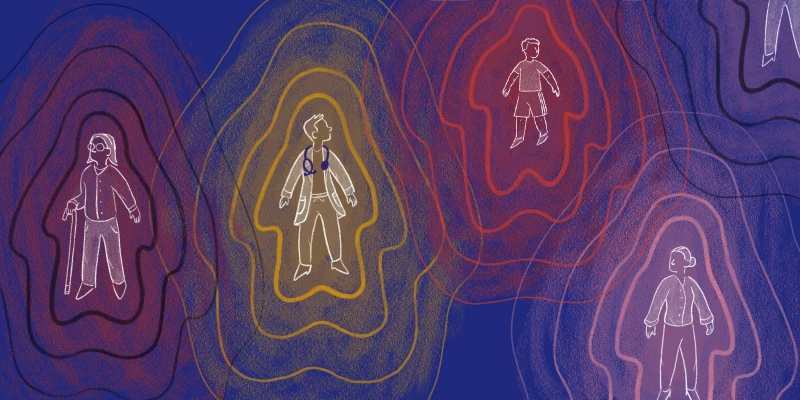There are more cancer types than there are organ systems, but, according to Hollywood, there is essentially just “Cancer.” Capital C. Period.
Cancer-inflicted characters on the silver screen also primarily face just one outcome: Death. This usually follows a montage of chemotherapy treatments that leave movie stars bald and purple under the eyes. There is no targeted immunotherapy in Hollywood. No clinical trials. No genomic medicine. Just an amorphous round of “chemo” following an ambiguous diagnosis of “cancer” that almost always leads to an untimely death.
Why do Hollywood films' unrealistic portrayals of cancer matter? Because they matter to patients, to patients' families, and to society at large.
In a commentary that my colleagues and I published in JCO Oncology Practice, we found that, to individuals with cancer and their families, films can create misunderstandings about curability, treatment options, types of care available, and costs that have real-life implications.
We reviewed more than 100 films released between 2010-2020 and found several key findings about films’ lasting impact on public perception of cancer treatment, prevention and care options. These findings include:
Silence is Not Golden
Hollywood shapes public opinion about everything from LGBTQIA+ rights (“Philadelphia”) to racial disparity (“To Kill a Mockingbird”). Our study found that the portrayal of type of cancer does not accurately reflect the most common cancers that are diagnosed. For the most part, cancer type isn’t mentioned in film, but when it is, movie makers often cast brain cancer in a lead role, when in fact, it is not even in the top 10 cancers diagnosed in the U.S. Meanwhile, lung cancer, which is the second-most diagnosed cancer in the U.S., hardly makes a cameo. We know that films are fiction, but if leading cancer types got leading roles, this could spur conversations – and public knowledge – about screenings and other preventative measures that could offer real value to public health.
Survivorship Inaccuracies
If a character develops cancer in the first act of a film, they are generally dead by the time the credits roll. Meanwhile, survivorship and "thrivorship" is on the rise for nearly every cancer type. In fact, the cancer mortality rate has decreased, according to the CDC. And the number of cancer survivors is projected to increase by 24.4% by 2032. While we acknowledge that death may be integral to the story line, it doesn’t serve anyone’s interest to depict cancers as “untreatable” when they actually can be overcome. In fact, ample studies have found that a person’s disposition toward cancer can greatly impact their outcome. Seeing more stories of triumph and medical accomplishments could go a long way toward helping patients develop a healing sense of hope.
Palliative Care and Hospice – Common in Treatment, Uncommon in Movies
Rarely, if ever, are palliative care options depicted in films. For this reason, oncologists need to be aware when discussing the utilization of such services that individuals with cancer, as well as caregivers, may possibly lack knowledge surrounding these services, and that they may carry potential stigma. The lack of awareness of palliative care and hospice represents a missed opportunity to enhance public perception of these services’ immense benefits.
Financial Toxicity
Only four of the 104 movies addressed financial costs, with only one heavily focusing on the financial stresses associated with cancer treatment. There is a lack of knowledge surrounding financial toxicity among individuals. Certain places, for example, offer patients a financial navigator to help educate patients and mitigate the consequences related to cancer costs.
Of course, Hollywood is in the business of entertainment, not education. Omissions, misrepresentations, and even straight-out fabrications are an expected part of fiction. For this reason, my colleagues and I offered a simple suggestion: Patients and oncologists must be cognizant that movie depictions of cancer may not accurately reflect the state of cancer care. Physicians must identify these potential misconceptions about cancer, its prognosis or treatment due to patients’ prior influences from movies, and in turn, help educate patients on the realities of cancer care.
Like films themselves, our study was meant for entertainment, not oncological education. But we do hope we can make individuals newly diagnosed with cancer, treating physicians, and the general public aware that movies do not accurately reflect the state of modern cancer care or the advances that physicians are making every day in cancer management. This could encourage people to approach cancer prevention, diagnosis and treatment with a realistic outlook – one that enables a happier “Hollywood ending.”
How do you talk about cancer misconceptions with patients? Share in the comments.
David J. Benjamin, MD. is a medical oncologist at Hoag Memorial Hospital Presbyterian, Newport Beach, CA.
Illustration by Jennifer Bogartz






